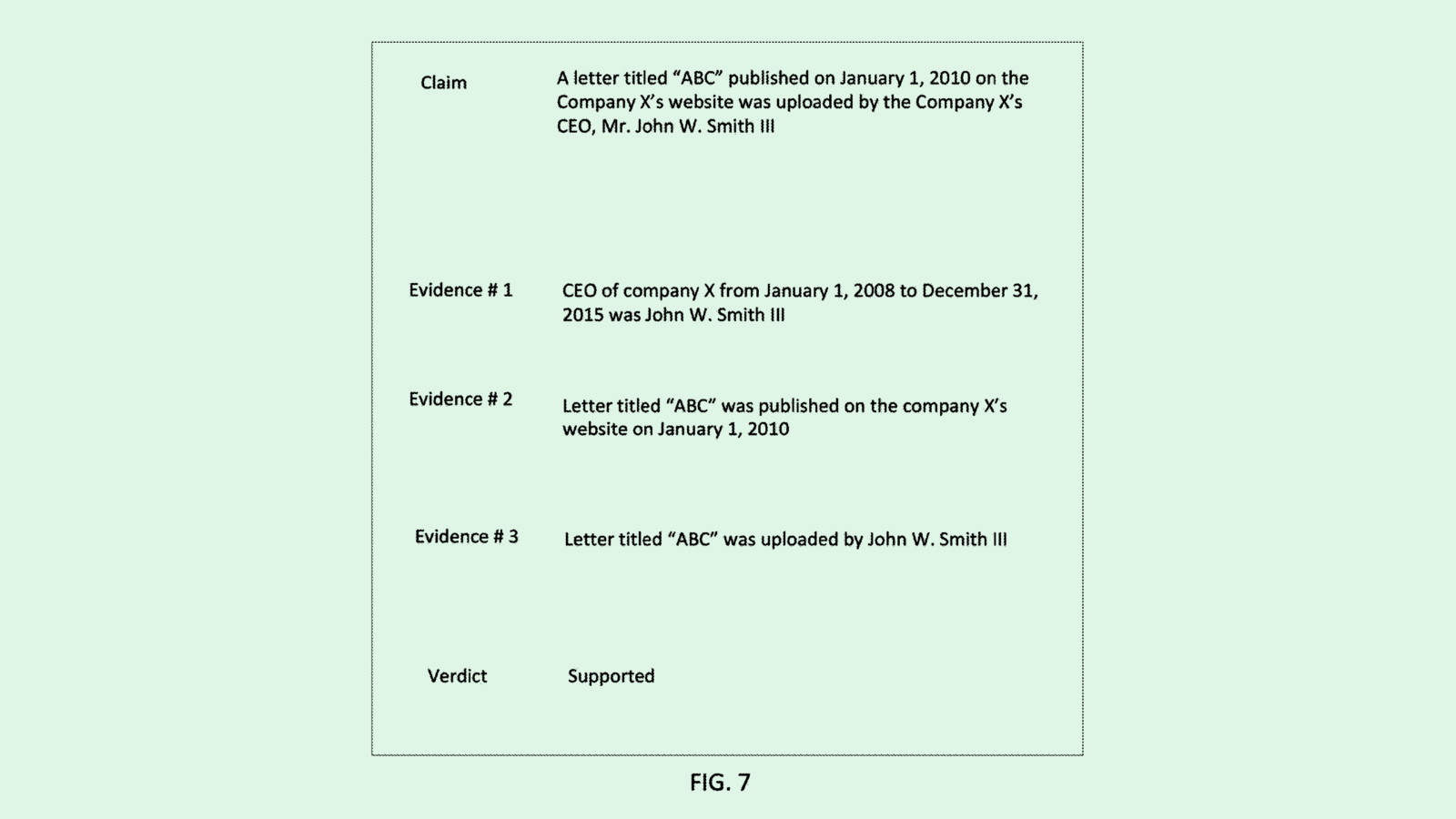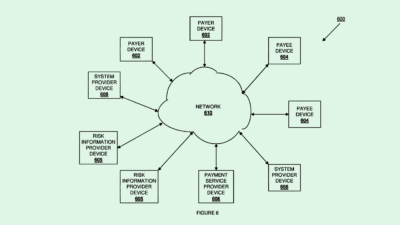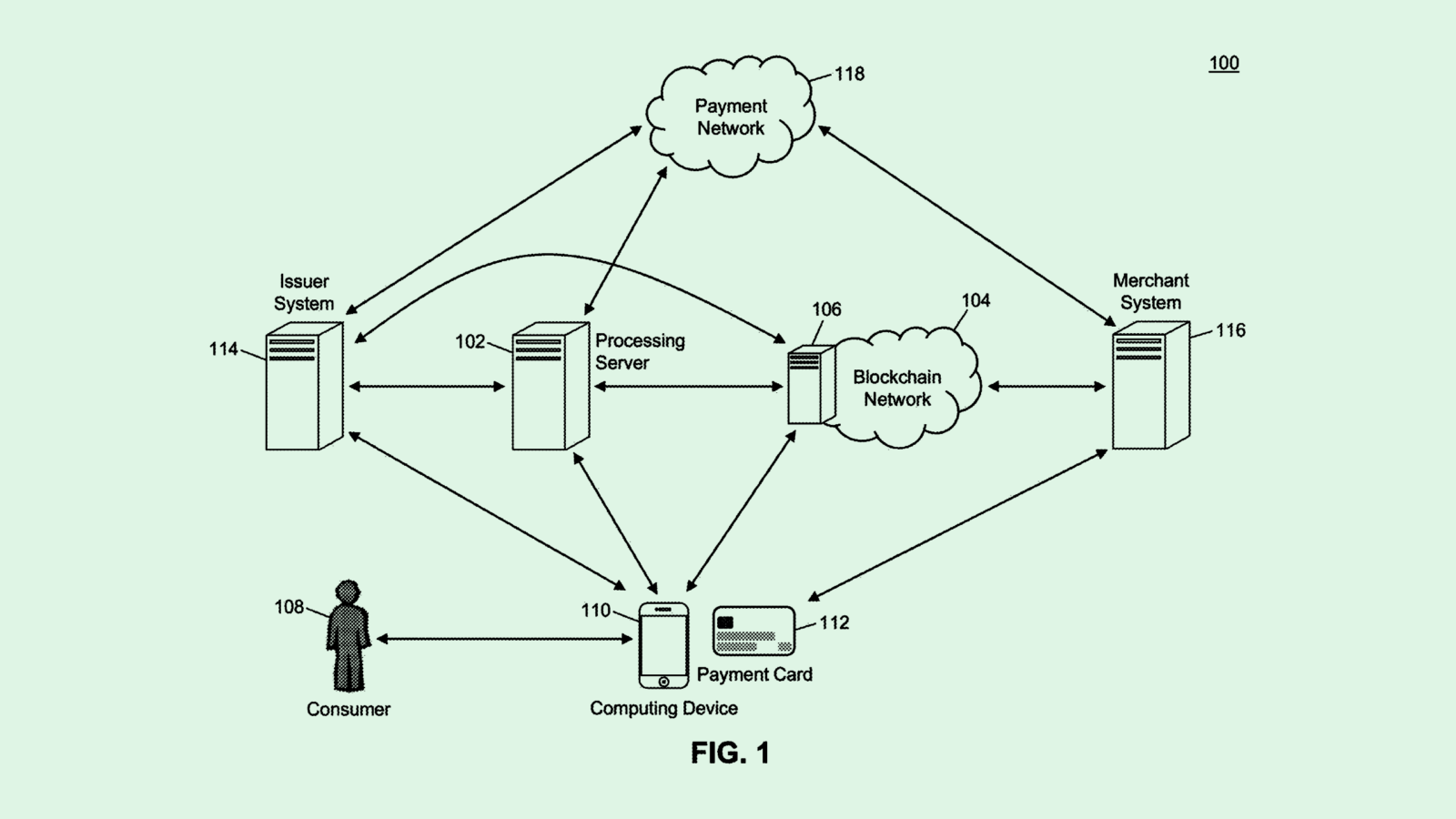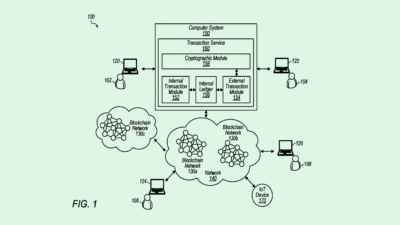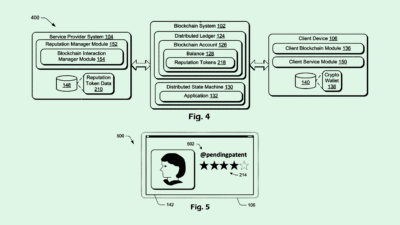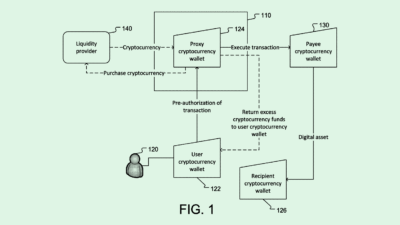Sign up to uncover the latest in emerging technology.
Plus: Why context is key in building your smart home device.
Happy Monday and welcome to Patent Drop!
Today’s edition of Patent Drop is brought to you by The Hustle — the go-to read for 2.8 million innovators. In between hunting down need-to-know tech news and well-timed gifs, The Hustle helps hone in on bright ideas and illuminates the business trends of the future. Sign up at no-cost here.
Today, we’re digging into Pinterest’s potential NFT play, Apple and Amazon’s plans to help AI really understand you, and Boeing’s tech to make traveling easier for disabled passengers. Let’s get into it.
#1. Pinterest’s new groove
What’s the first thing that comes to mind when you think of Pinterest? Is it outfit inspiration, moodboards, and recipe ideas? The company might want to gain traction with a new crowd not typically associated with its usual DIY arts-and-crafts demographic: blockchain enthusiasts.
The company filed a patent for technology for the authentication of NFTs. Essentially, this tech works by comparing a “candidate NFT,” or one that a user wants to officially mint on a blockchain, to other existing NFTs that have similar characteristics. This helps to verify ownership and to ensure that they aren’t duplicating a piece that already exists.
“While the existence of NFTs on a blockchain provides the ability to track the NFT and determine the history and ownership of the NFT, there is currently no way to authenticate that the data represented or pointed to by the NFT is authentic and/or unique to that NFT,” Pinterest said in its application.

Pinterest hasn’t publicly signaled any interest in jumping into the world of NFTs, and didn’t respond to Patent Drop’s request for comment by the time of publication. However, it would hardly be the first social media company to do so; platforms like Twitter and Instagram made splashy entrances into the space last year. But as Pinterest leans hard into ecommerce, it would seemingly be following in the footsteps of Meta by enabling NFTs on its platform.
“The future internet is one that is user-owned. NFTs play a large role in building that future,” Chris Castiglione, co-founder of Web 3.0 secure chat platform Console.xyz, said in an email. “Incumbent companies like Pinterest are looking for ways to evolve and stay competitive.”
The difference, however, is demographic. Instagram appeals to a much wider audience than Pinterest, whose niche tends to lean more towards teenage girls planning their future weddings.
While this doesn’t seem like the typical audience for NFTs, Pinterest is a photo-based platform where art can easily be posted and reposted without credit to its creator. Using blockchain to track who the original creator of a piece is could be a revelation in terms of ensuring that creators are given proper credit, said Aaron Rafferty, co-founder at StandardDAO.
Pinterest, in other words, could be taking a step towards leveraging blockchain as a background technology, with a major use case being the prevention of art theft, Rafferty said.
“If I’m going to create something for Pinterest, having a record of use around those creations actually becomes something that you can do with blockchain,” said Rafferty. “You’re going to see not only a date and timestamp, but an immutable record that I brought this (creation) into the world.”
#2. Context is key
When building AI, context can be a hurdle — What are things understood by humans in an interaction that a machine simply wouldn’t get? Some tech companies are trying to figure that out.
To start, Amazon is trying to help Alexa get to know you. The company is working on natural language process tech that can better interpret the context of the words you say. The tech works by providing a way to group together different “language recognition context” based on different user voice habits, essentially creating profiles for users based on their commonly requested commands.
“If a user interacts with different playlists, shopping or browsing histories, or contact lists in different circumstances, a natural language processing system may have difficulty responding promptly and accurately to user requests, particularly to user requests that involve consideration of language or context particular to the user.” Amazon said in its application.
For example, because a user may give Alexa different commands while they’re driving their car versus while at home, this tech allows Alexa to more quickly and accurately respond based on where they are. It also learns the voice habits of multiple users at once, so that it can personalize responses based on who’s asking.
Essentially, this tech could alleviate Alexa’s difficulties assessing and understanding context — by allowing Alexa to glean everything it can about you. One caveat: Because the system gets better as users interact with their devices more and more, it only knows their specific quirks the longer they’re around it, meaning it might have more trouble understanding the context of a guest’s requests.

Meanwhile, Apple is working on a similar concept for its “multimodal assistant,” a.k.a. Siri. The company filed a patent for tech that can detect and navigate “ambiguous” user requests based on context. To break it down, this system works by “extracting metadata” stored on your device if you give Siri a confusing request.
One example Apple gives is, if a user asks Siri, “Please invite my friends to my girlfriend’s birthday party next week,” the system will retrieve data from your contacts and send out a calendar invite. In another, a user says, “Hey Siri, where am I?” and the system uses location data to respond with accuracy. Along with improving your relationship with Siri, Apple notes that this tech can also improve your battery life by making Siri have to work less hard.
“In some cases, a user may provide a request that is ambiguous … that is difficult for the digital assistant to determine an appropriate response to,” Apple said in its filing. “Efficient and effective ways of resolving these ambiguities using various context data are desired.”

While their approaches are different, Apple and Amazon are essentially striving for the same goal: Collecting as much information as possible on you so that their tech can support you to the best of their ability. The difference between Apple’s tech and Amazon’s is that, while Amazon is collecting data on what you say and how you say it, Apple is just digging through your data to understand you better.
Real understanding of human behavior and language can be a difficult thing for an AI to learn. But getting context right can lead to major breakthroughs in the evolution of this kind of tech. It’s the same reason why Amazon is working on giving Alexa the ability to detect emotions in your voice: The more an AI can understand the things that aren’t said, the better the AI can do its job.
SPONSORED BY THE HUSTLE
“Like If Harvard Business School & GIPHY Had A Baby”
If you asked us to describe The Hustle in one sentence, that might just be it.
Of course, we’re missing some important details – like the fact that it sends a daily newsletter to over 2.8M subscribers educating them on all of the most important happenings in the business and tech worlds – but hey…
It’s pretty darn close.
When you subscribe to The Hustle (which you can do right here), you don’t just get a Harvard Business School-level education straight from the mouths of top entrepreneurs. You also get wildly entertaining gifs, insightful commentary on our industries, and some of the most interesting long-form Sunday stories you’ve never heard about before.
Ready to rock?
Start reading and see for yourself why SaaS giant HubSpot acquired The Hustle in 2021.
#3. Boeing’s helping hand
Getting on a plane can be a hassle for anyone. But for people with visual impairment, travel can often prove to be a massive struggle.
Boeing is working on tech to help the visually impaired more easily navigate their way around an aircraft. This system uses several “short-range transmitters” throughout an aircraft cabin, with each transmitter located at a “different respective waypoint,” such as a seat or a restroom. The transmitters send wireless signals to an app on a user’s smartphone, which then gives the user audio assistance to help them make their way around the cabin.
To paint a picture: If a visually impaired passenger is boarding an aircraft, the passenger will be given audio instructions using their smartphone to guide them to their seat, with each short-range transmitter they pass helping guide them. If that passenger needs to use the restroom during the flight, the application will give them audio directions to get there.
“When traveling using a form of public or mass transportation, visually impaired passengers face substantial difficulties in navigating,” The manufacturer said in its filing. “There is a need for improved technology to provide wayfinding assistance to visually-impaired passengers.”

Tech companies’ interest in assistive and accessible innovations has grown in recent years. But the travel industry lacks that same pace of innovation, with air travel proving to be exceptionally difficult for people with disabilities.
In 2018, Congress passed the FAA Reauthorization Act, which demanded that airlines and TSA make travel more accessible and less cumbersome for people with disabilities. And yet, reports have emerged since then showing that flying has remained a challenge for disabled people, with the shortage of airline staff making it even harder. “visually-impaired passengers generally require assistance from another person to navigate,” Boeing said in its application. “This often requires waiting for availability of a support person to provide assistance, and can result in delays and embarrassment for visually-impaired passengers.”
By adding assistive tech, Boeing may be trying to solve for two issues, easing travel for visually impaired passengers without the need for support from a flight crewmember.
Extra Drops
Some other fun patents we wanted to share.
Intel wants to keep your meetings confidential. The company is working on tech for “automatically enhancing privacy” in a video call by putting up a privacy screen if another individual is seen in the background.
Apple wants to make working out more rewarding. The company is seeking to patent “fitness challenge e-rewards,” which essentially awards users digital gold stars to motivate them to complete activity goals.
Starbucks wants to make your drinks more Instagrammable. The company filed a patent application for a system that automates “color customization” for beverages, just in case you wanted a picture-perfect coffee that you can coordinate with your outfit.
What else is new?
Twilio is laying off around 1,500 employees, or 17% of its workforce. This is the company’s second round of layoffs after it cut 11% of its staff in a restructuring plan in September.
Uber signed a deal to move its IT to Oracle’s cloud-computing platform, stepping away from housing 95% of its data in Alphabet’s data centers.
TikTok parent ByteDance is taking on Meta in the VR ring. Pico, a VR company acquired by ByteDance, has upped shipments to compete with Meta’s headsets.
$300 Billion Worth of Annual Trading Activity is powered by quantitative strategies for one simple reason: they work. Like dipping a toe in the pool before diving in head first, Composer lets you backtest different investment strategies so you can plan your portfolio accordingly. Do you need to know code or have a PhD? Absolutely not. With point-and-click, algorithm-backed tools, you can unlock the power of quant investing with minimal research. Sign up and join the thousands of investors trading on Composer.*
*Partner.
Have any comments, tips or suggestions? Drop us a line! Email at admin@patentdrop.xyz or shoot us a DM on Twitter @patentdrop.

